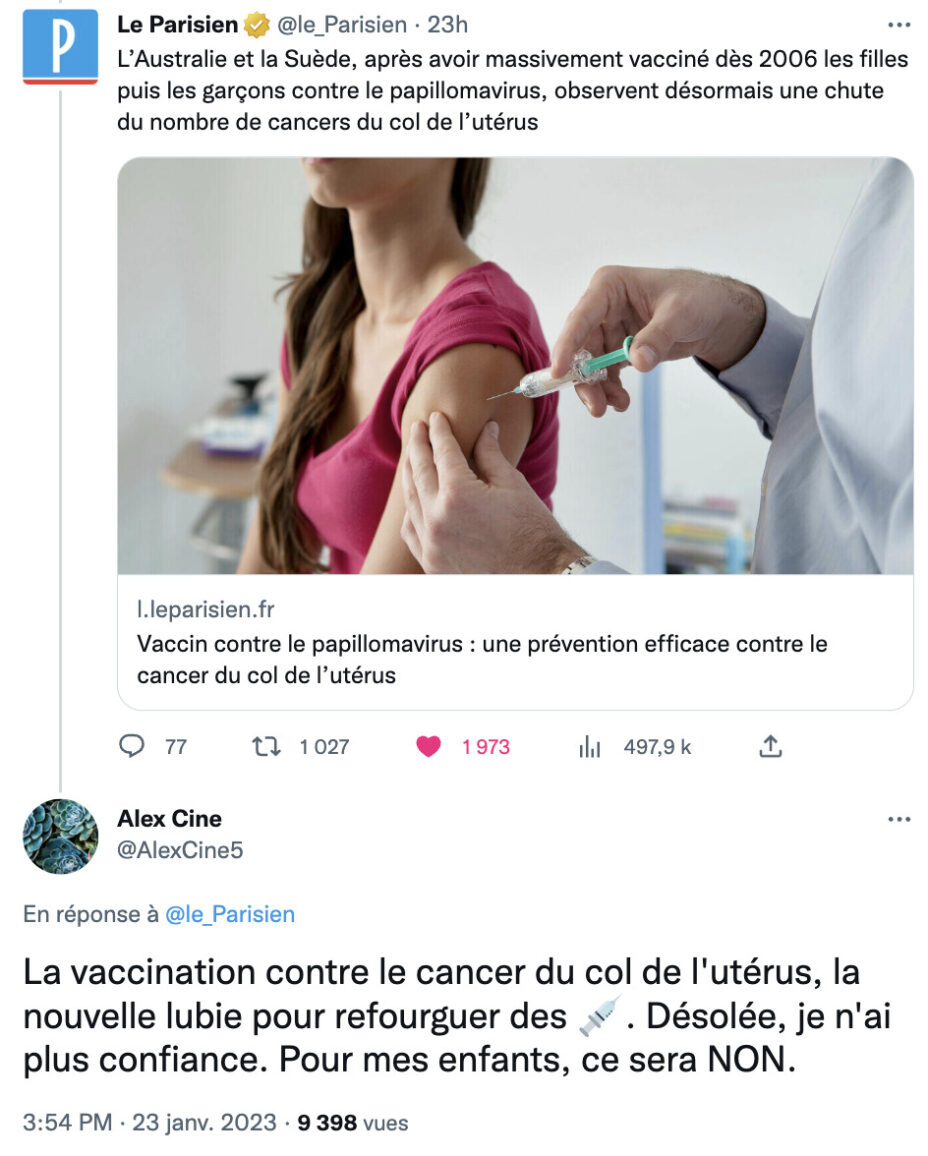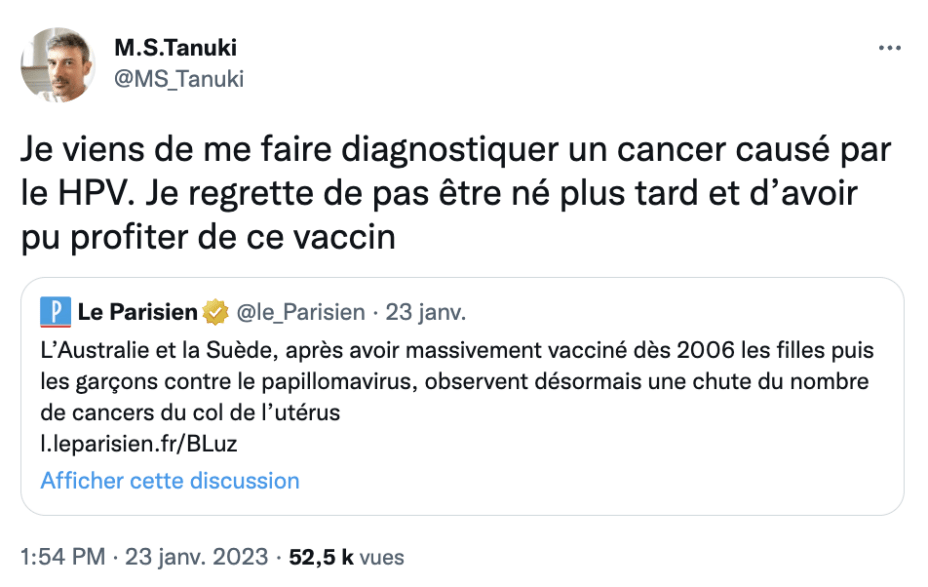Since 2006 Sweden and Australia have massively vaccinated girls and boys. So much so that these countries are seeing a decline in the number of cervical cancers, notes Dr. Martine Perez for The Parisian.
HPV, responsible for 70-90% of cervical cancers
The latter, in fact, are generally due to papillomavirus, the most widespread sexually transmitted infection (STI) in the world. gold,” Vaccination against human papillomavirus (HPV) can prevent infections by the most common papillomaviruses, responsible for 70-90% of cervical cancers in women “, informs ameli.fr, the health insurance site. But this TSI is about people of all genders, who may be asymptomatic carriers and pass it on to their partners, and/or develop tumors of the oropharynx and anus (for the latter, this is especially true in men who have sex with men, by the way).
While in Australia and Sweden there are fewer and fewer cervical cancers, mainly thanks to the HPV vaccine, recognized for its effectiveness for more than fifteen years without worrying side effects, France seems to be a bad student. Indeed, it is the country in Europe with the lowest vaccination rate, he observes The Parisian. While the political will was to be realized between 2014 and 2019 vaccination coverage 60% among girls aged 11 to 14, it would be only 30-40% in 2022. Blame in particular a climate of distrust towards vaccines, typically French…

A vaccine still recommended in France for girls and boys aged 11 to 14
Therefore, it is always in good taste to make a small reminder about the papillomavirus and the interest of vaccination. HPVs circulate in particular when one is sexually active, hence the interest in getting vaccinated before starting a possible sexual life. This is one of the reasons why vaccination campaigns in France are aimed mainly at children, as the French health insurance reminds us: “ the vaccine is recommended for all girls and also for all boys aged 11 to 14. On the other hand, we can regret that boys no longer resort to it, when they too can, once their possible sexual life has begun, be carriers of the virus (asymptomatically or not) and transmit it to their partners of all sexes, or even they themselves develop cancer of the anus or penis.
As a reminder, the human papillomavirus vaccine is one of the vaccines covered by health insurance. Up to 65% is then reimbursed, on medical prescription, while usually the complementary organizations (of the mutual aid type) intervene to complete the reimbursement. This vaccination may also be free in some vaccination centers and sexual health centers (such as the CeGIDD: Free Center for Information, Screening and Diagnosis of Human Immunodeficiency Virus Infections, Viral Hepatitis and Sexually Transmitted Infections). Health insurance also explains:
“The High Council for Public Health (HCSP) recommends starting any new vaccination with the Gardasil® 9 vaccine for previously unvaccinated people. This vaccine protects against HPV infections type 16, 18, 31, 33, 45, 52 and 58, which are involved in 90% of cervical cancers, 80% of anal cancers and 90% of anogenital warts (condylomas). »

Cancers of the cervix, oropharynx and anus preventable thanks to the HPV vaccine
Although vaccination strengthens measures to prevent cervical cancer, it does not replace preventive measures (screening for cervical lesions by smear or HPV test). Vaccination does not protect against all possible types of cervical cancer (but against many of the more common ones). Even vaccinated, it is therefore advisable to remain vigilant for possible injuries, etc.
Asked by The ParisianDr. Joseph Monsonego (president of the HPV commission of the National College of Gynecologists-Ostetricians and director of the Institut du cervix in Paris) believes thatbetween 25 and 30% of women under 25 are exposed to HPV in the cervix and 30 to 40% of men who have sex with men in the anus. In 90% of cases, these infections resolve spontaneously. But in the remaining 10%, they can persist, progressing to detectable and treatable pre-cancers or cancer if not treated early enough. In France, there are approximately 3,000 new cases of cervical cancer per year, 1,700 of oropharyngeal cancer and 1,600 of anal cancer.
In short, regardless of gender, we are all affected by the papillomavirus.
Cover photo credit: Kalinovskiy of Getty Images via Canva.
Build Madmoizelle’s future with us by answering these questions!
More articles about
Rights of LGBTQI+ people
-
Mascare: “Cabaret is an art that is not limited to one genre”
-
Why a law for trans people in Scotland was rejected by the UK
-
A feminist masterpiece about transgenderism, Joyland is the best film to see this week
-
Why today’s feminists need to rediscover the radical work of Monique Wittig
-
Algeria seeks to remove all products with rainbow colors
Source: Madmoizelle
Mary Crossley is an author at “The Fashion Vibes”. She is a seasoned journalist who is dedicated to delivering the latest news to her readers. With a keen sense of what’s important, Mary covers a wide range of topics, from politics to lifestyle and everything in between.




